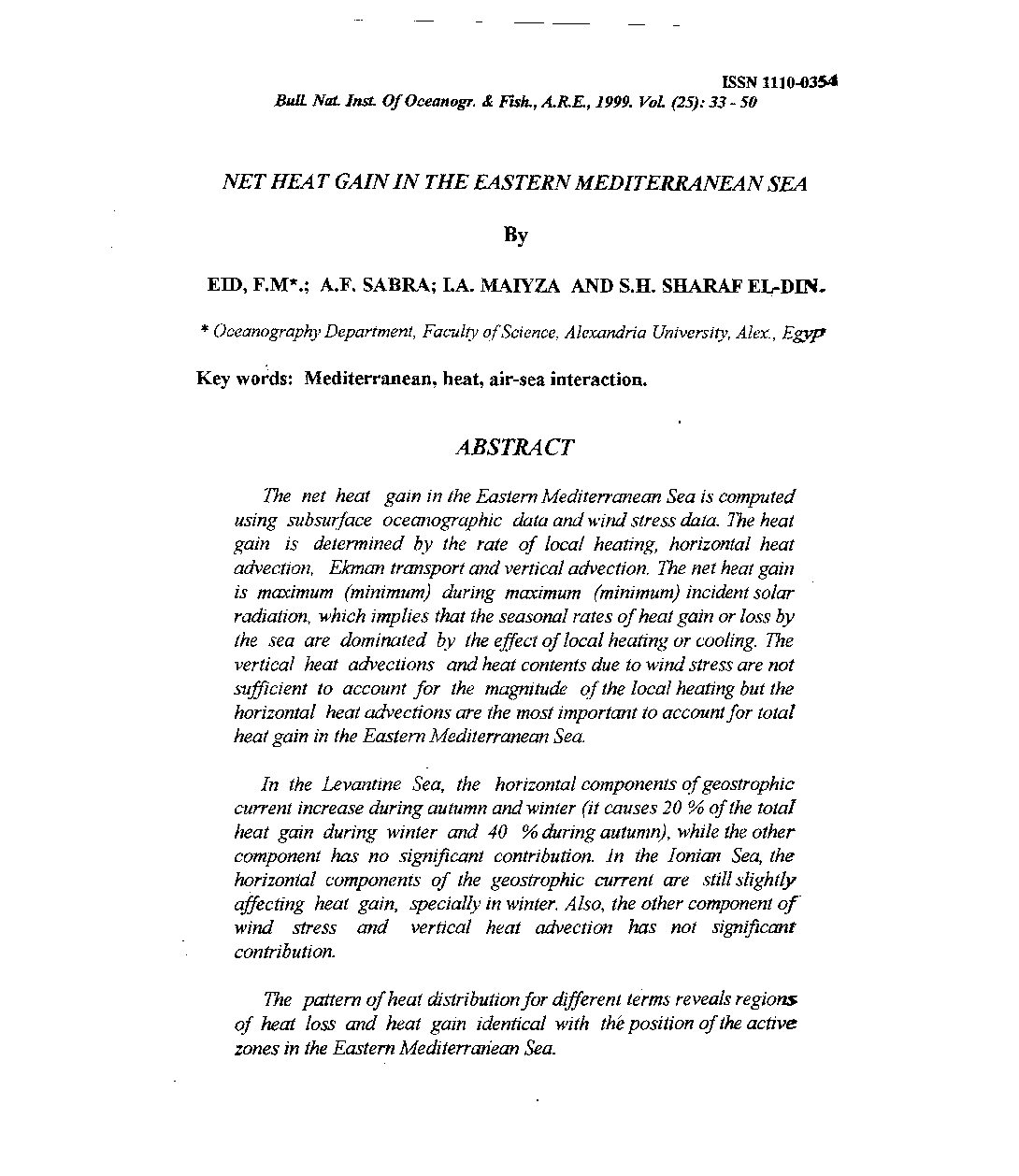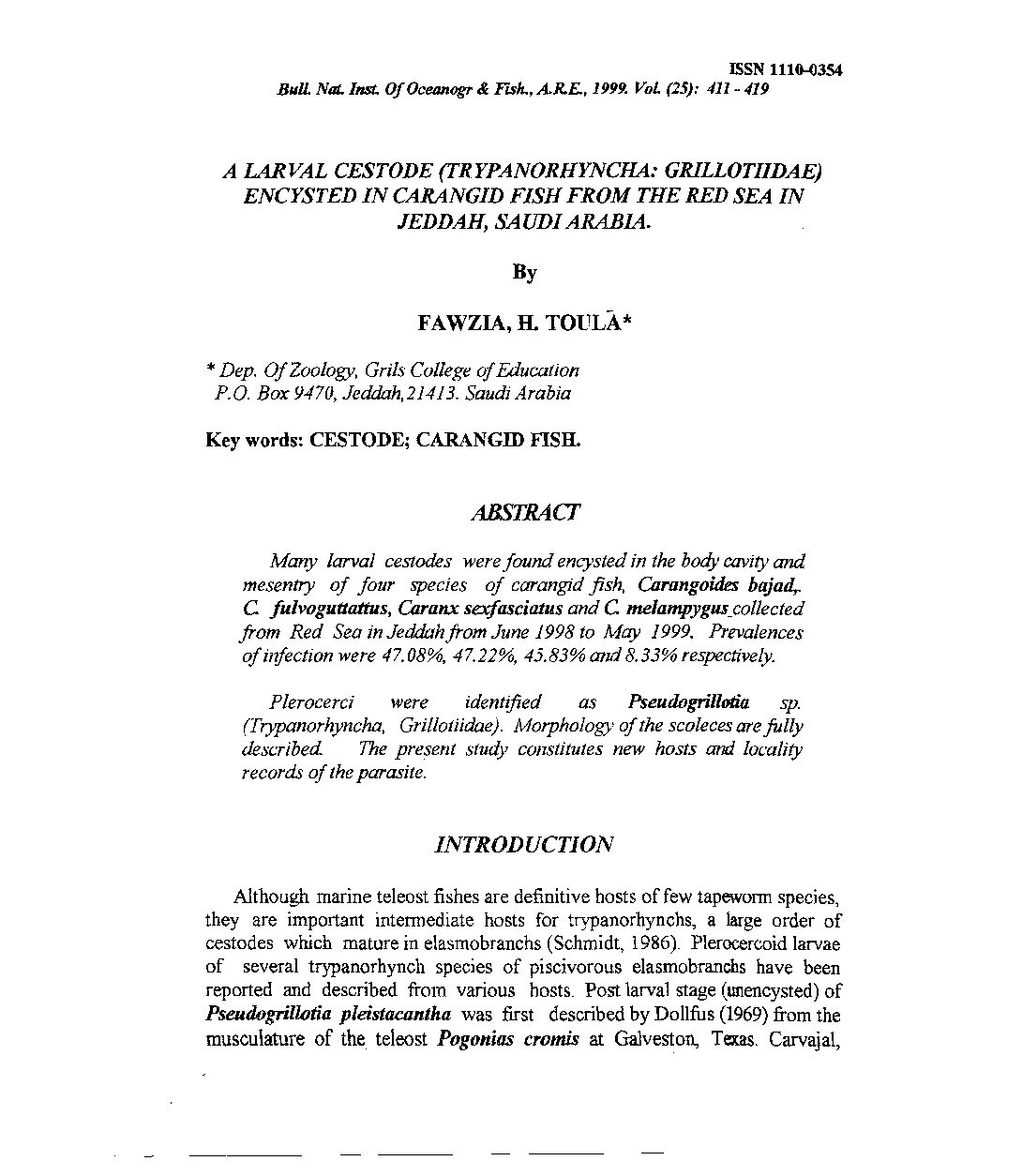Categories
vol-25NET HEAT GAIN IN THE EASTERN MEDITERRANEAN SEA
By
EID, F.M*.; A.F. SABRA; I.A. MAIYZA AND S.H. SHARAF EL-DIN.
* Oceanography Department, Faculty a/SCience, Alexandria University, Alex:, Egyp
Key words: Mediterranean, heat, air-sea interaction.
ABSTRACT
The net heat gain in the Eastern Mediterranean Sea is computed
using subsurface oceanographic data and wind stress data. The heat
gain is determined by the rate of local heating, horizontal heat
advection, Ekman transport and vertical advection. The net heat gain
is maximum (minimum) during maximum (minimum) incident solar
radiation, which implies that the seasonal rates ofheat gain or loss by
the sea are dominated by the effect oflocal heating or cooling. The
vertical heat advections and heat contents due to wind stress are not
sufficient to account for the magnitude ofthe local heating but the
horizontal heat advections are the most important to accountfor total
heat gain in the Eastern Jv1editerranean Sea.
In the Levantine Sea, the horizontal components ~rgeostrophic
current increase during autumn and winter (it causes 20 % ofthe total
heat gain during winter and 40 % during autumn), while the other
component has no significant contribution. In the Ionian Sea, the
horizontal components of the geostrophic current are still slightly
affecting heat gain, specially in Winter. Also, the other component of’
wind stress and vertical heat advection has not Significant
contribution.
The pattern ofheat distribution for different terms reveals regions
of heat loss and heat gain identical with the position ofthe active
zones in the Eastern Mediterran”ean Sea.







